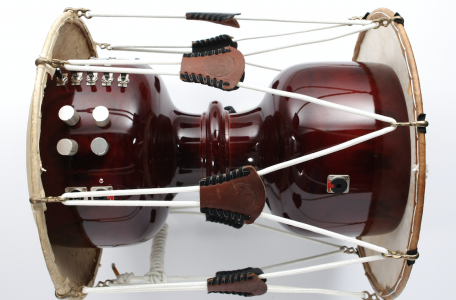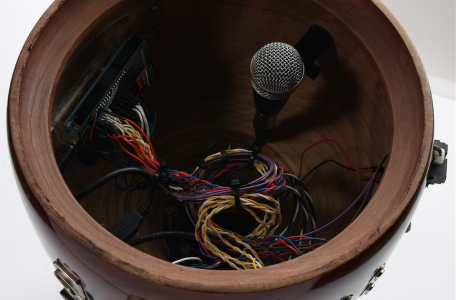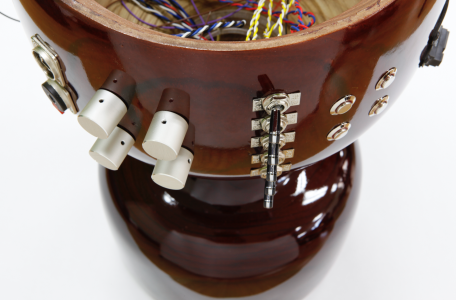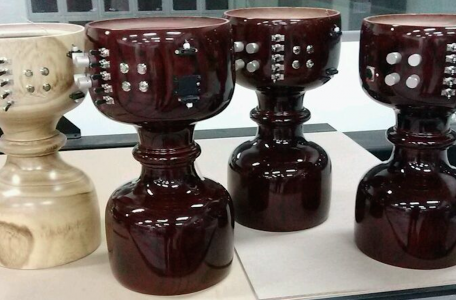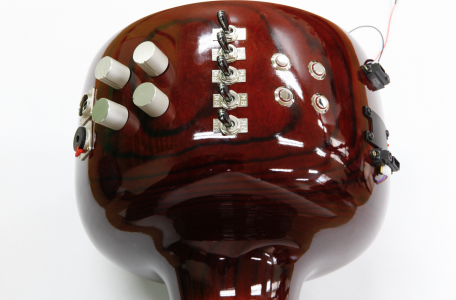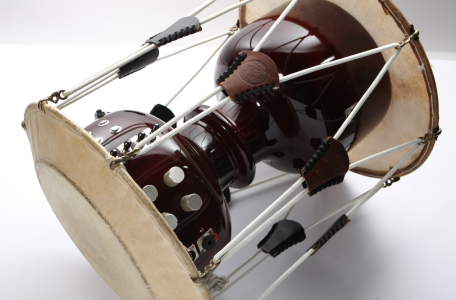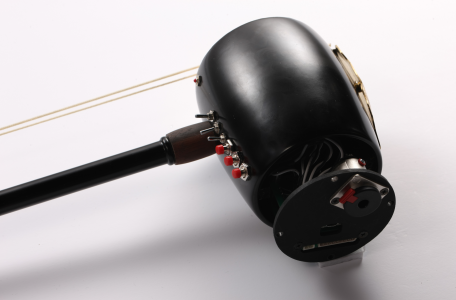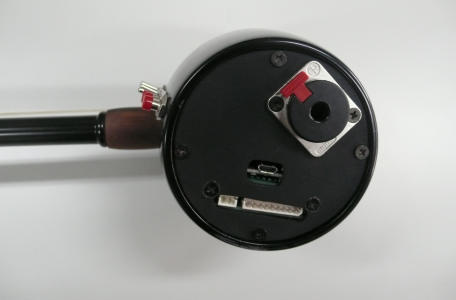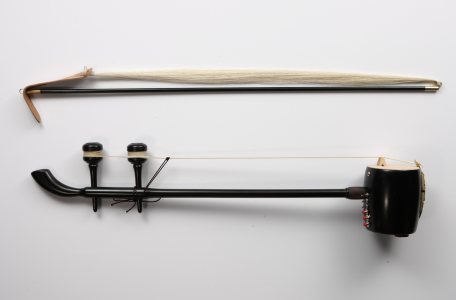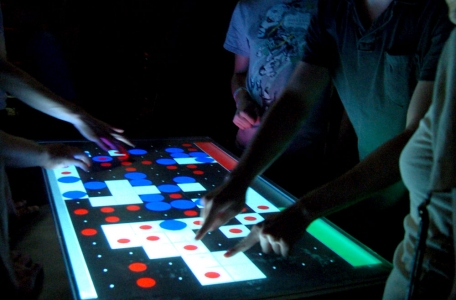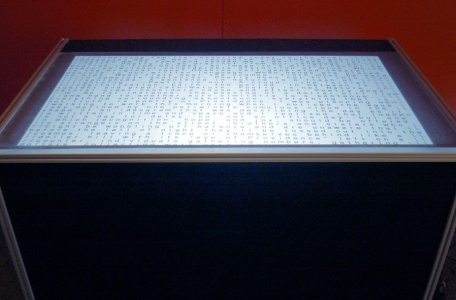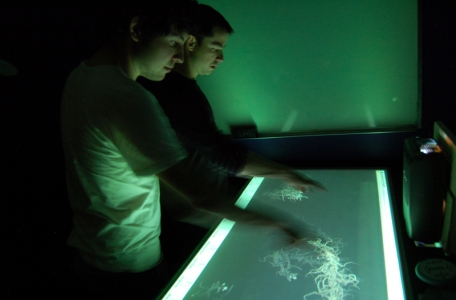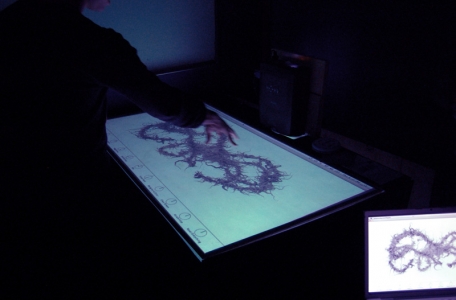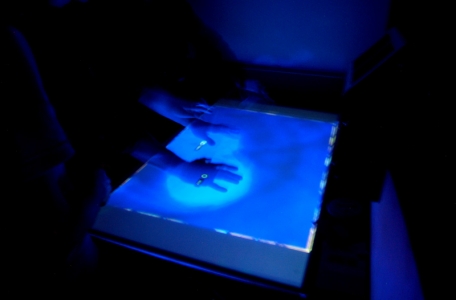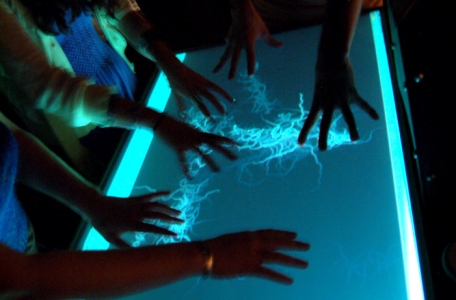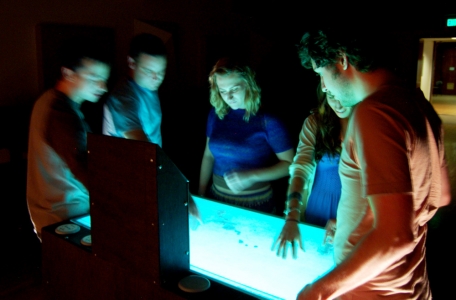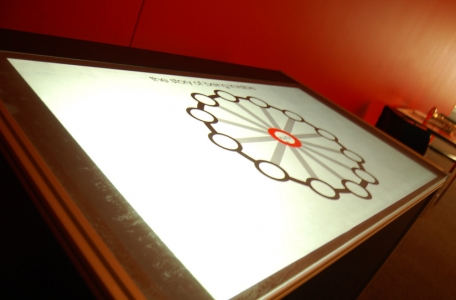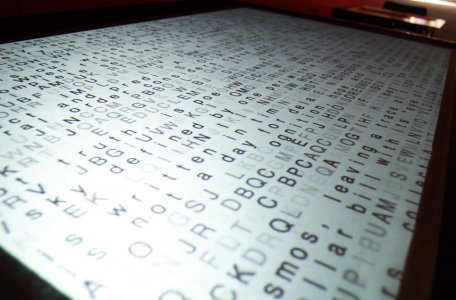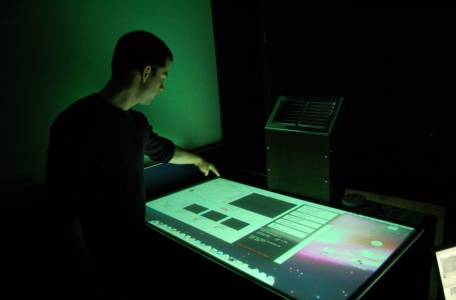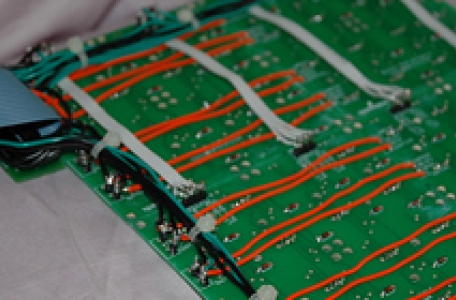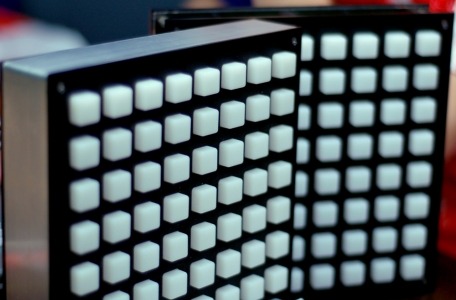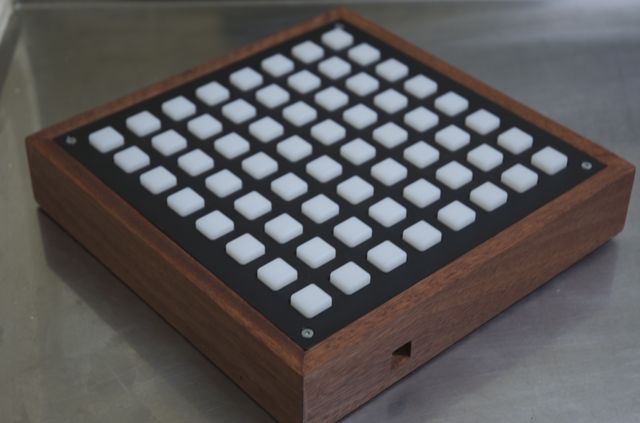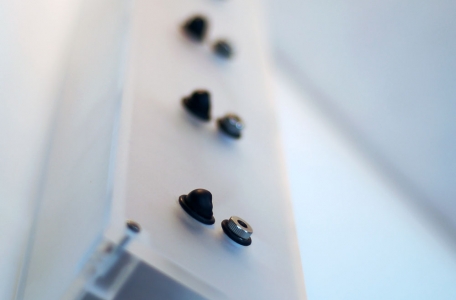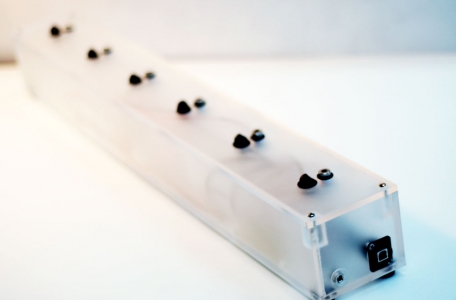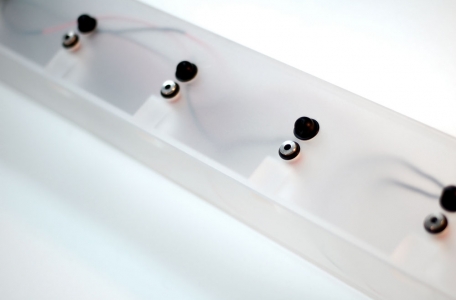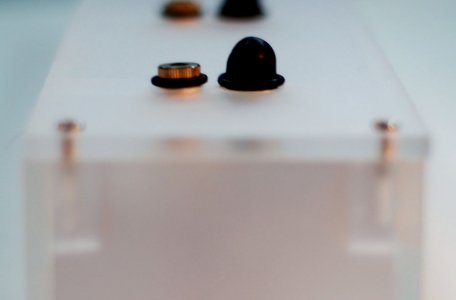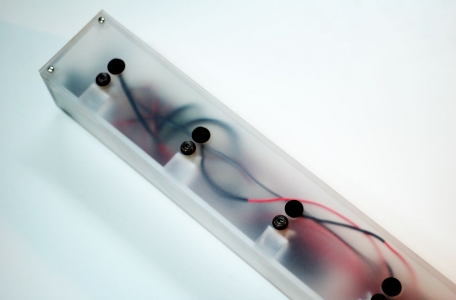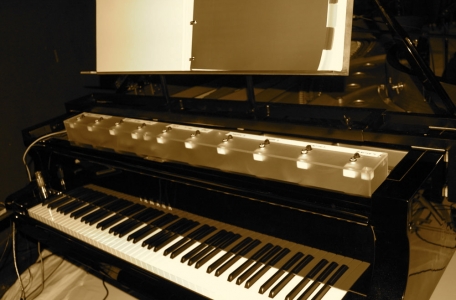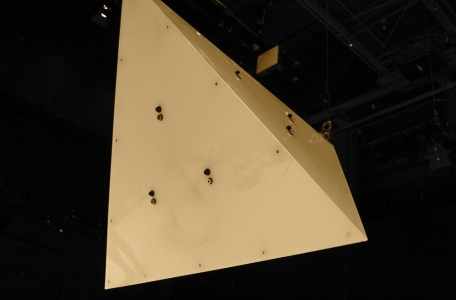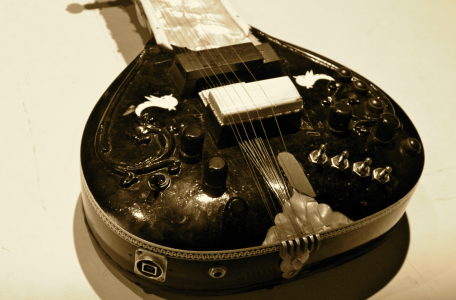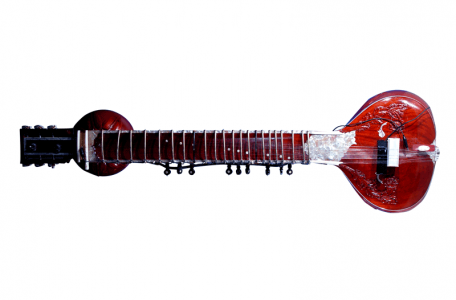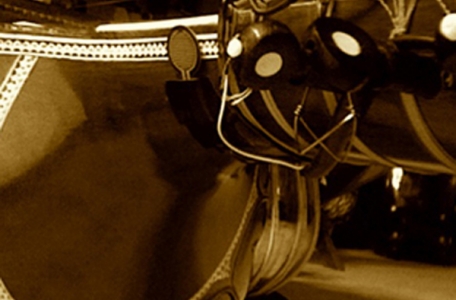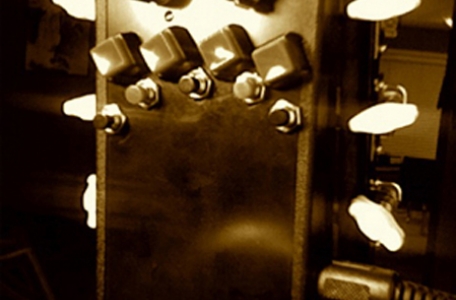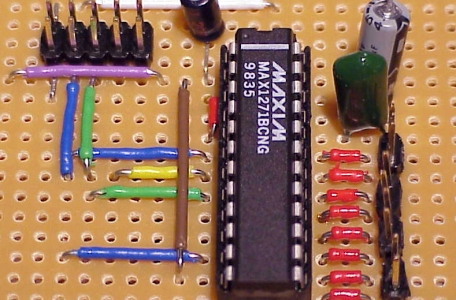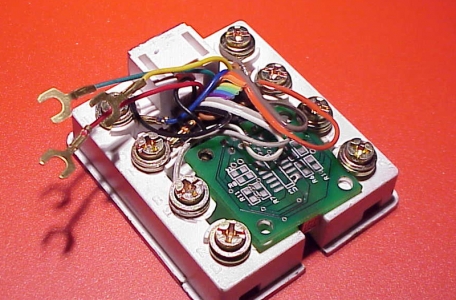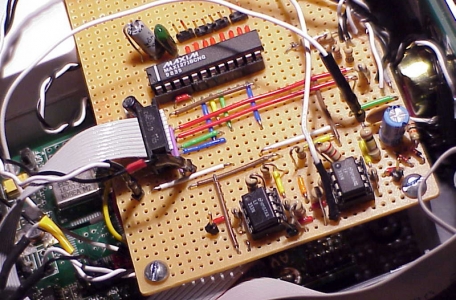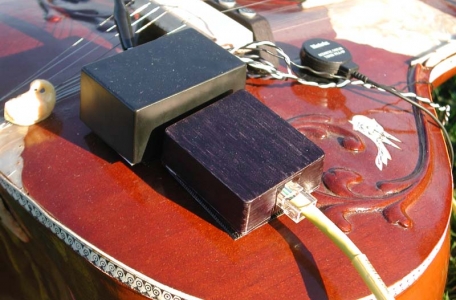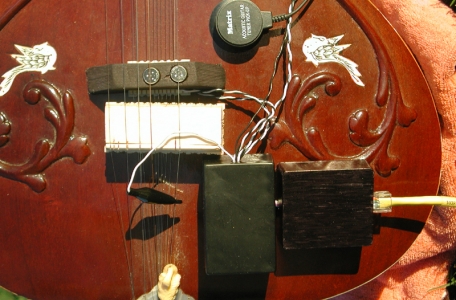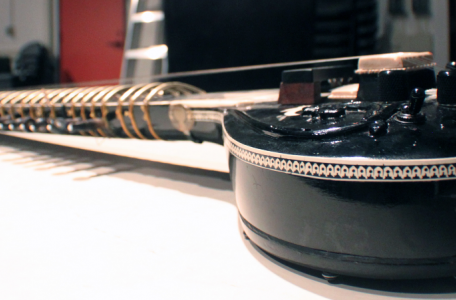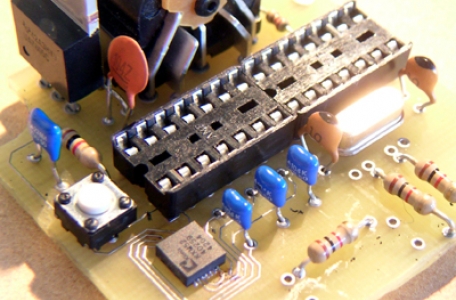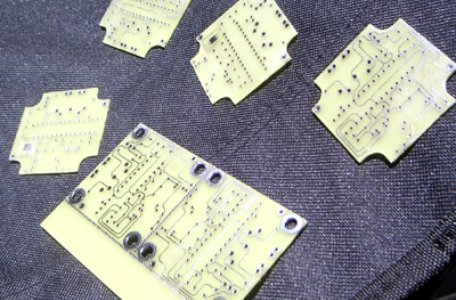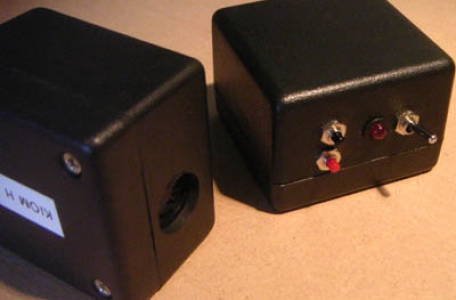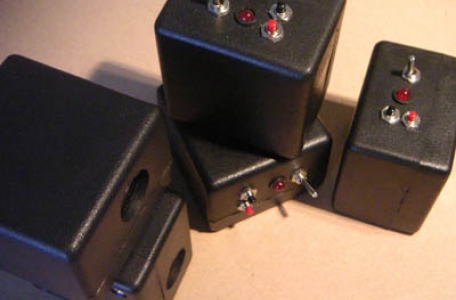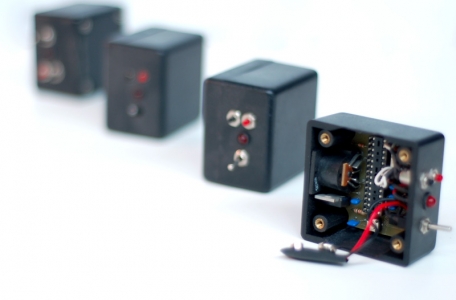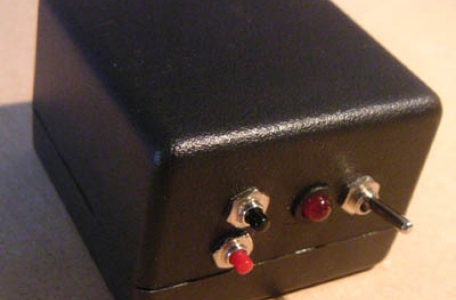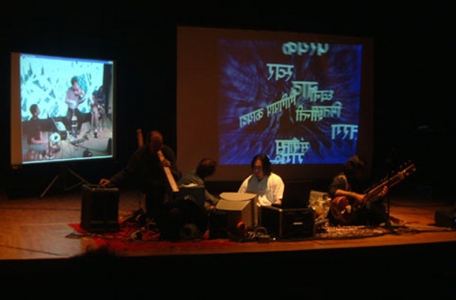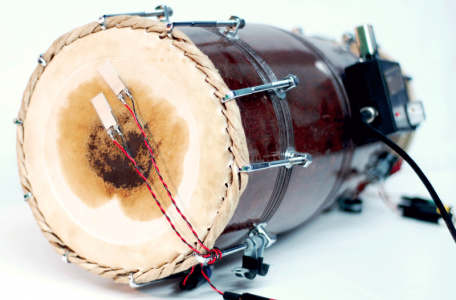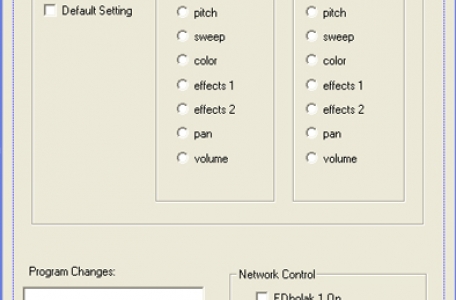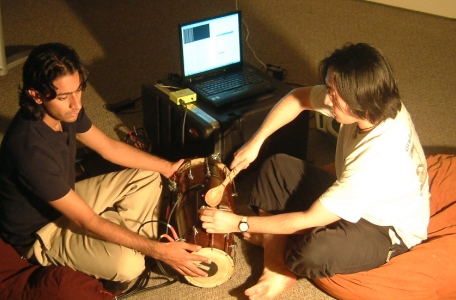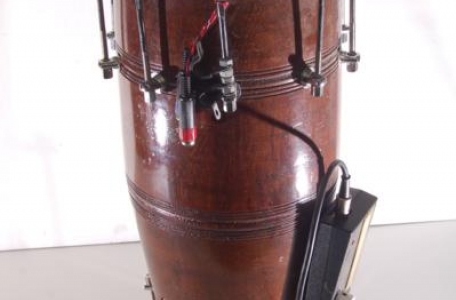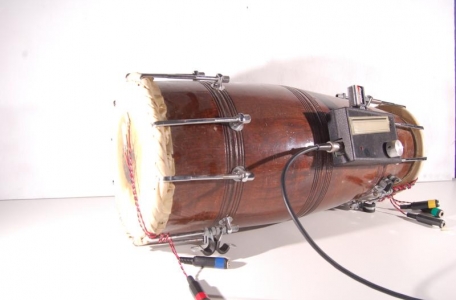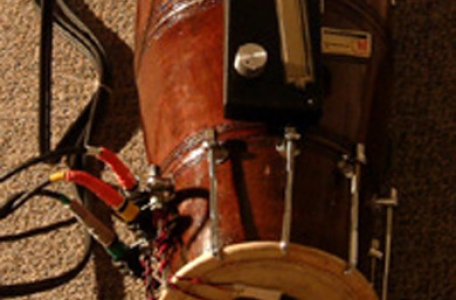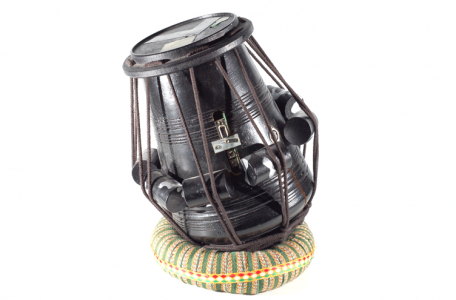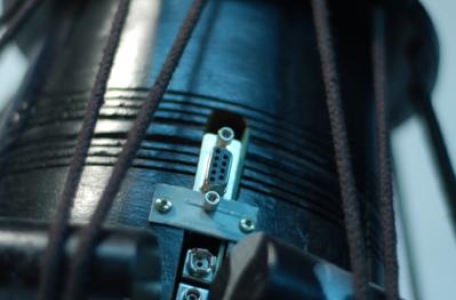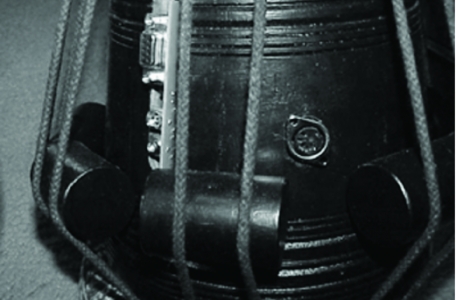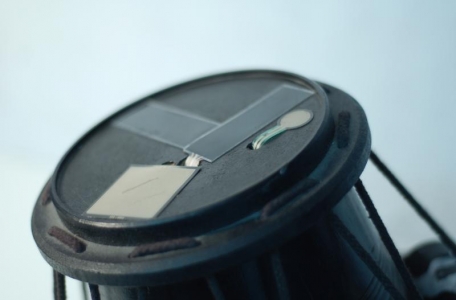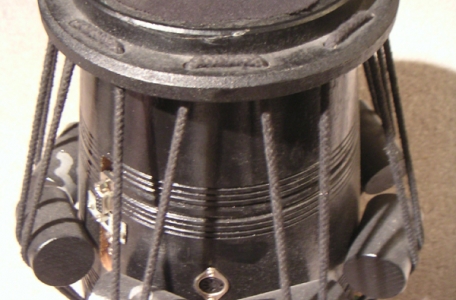Janggu is the most widely used instrument for jangdan (rhythmic pattern) among the Korean drum family. It is used in practically every form of Korean music. It consists of an hourglass-shaped body with two heads made from animal skins. The two heads produce sounds of different pitch and timbre, which are believed to represent yin and yang. Different sizes are used for different types of music: A-ak (a large sized version of the Janguu) is used in folk music, while Jeong-ak (a small sized version of the Janggu) is used with dancers, who carry it suspended from one shoulder, held diagonally to their torso. The design of the eJanggu involved many experiments with how the modification would effect the sound the instrument. One major test involved using a laser cutter to construct a custom plug inside the instrument to separate the sound of the left and right cavities to eliminate cross talk from the two microphone installed on either side. It was found, as expected, that this greatly effected the bass response of the instrument. However it did greatly improve the isolation of each microphones as clean signals in the mid-frequency range. Sensors were embedded into the eJanggu in a similar fashion to the eHaegum. Knobs and buttons were embedded directly into the shell of the instrument. Because the Janggu has a much larger cavity, the Arduino MEGA was chosen as the microcontroller with options for many more analog-to-digital converters and digital pins for design. The accelerometer was embedded, so that when the eJanggu was used with a dancing performer, they would get control of 3-axis of acceleration data. Two infrared sensors were installed. This configuration was chosen to capture data about how the Janggu is performed traditionally. There is a technique where the left hand crosses the drum and performs both sticks on the right hand skin. The infrared sensors were installed to sense what direction the hand is moving (left to right , right to left) so that the software can have intelligence on weather both hands are on the right hand skin or if each hand is on either side of the drum.
Archives
EHAEGUM
The Haegum is a two-stringed fiddle-like traditional Korean string instrument. It is played vertically held on the left knee, with a bow scraped against two silk strings with the right hand. It produces a nasal tone and piercing sounds, as it has no finger board and musicians pull the strings to get to the desired pitch. Haegum is traditionally said to be “pal-um-gu-bi (八音具備)” and “bisa-bijuk (非絲非竹),” literally meaning “made with eight materials (metal, rock, thread, bamboo, gourd, soil, leather, and wood)” and “non-string, non-wind.” Though in structure and playing method, it looks like a string instrument, in orchestral contexts it is considered to be more like a wind instrument because of its ability to sustain tones. The design of the eHaegum had many challenges. First of all, the Haegum has a very small cavity to install electronics, so the design incorporated the Arduino micro and two small custom built shields to connect the sensors and buttons. A key design element was to encase the electronics in the instrument itself, (rather than have an electronic box off the instrument) so that the eHaegum was easier for a traditional player to just pick up and plug in a USB cable and a TRS cable (rather than some strange assortment of cables leading to a box next to the computer). An accelerometer was installed inside the body of the instrument, and a second accelerometer was installed on the leather strap of the bow. A force-sensing resistor (FSR) was installed to fit underneath the bridge to gather data on how the left hand squeezes the strings while manipulating pitch. A series of buttons and switches were installed into the shell of the instrument to make it easy for the musicians to change patches and settings.
BRICKTABLE
Bricktable is a multi-touch and tangible surface for musical installation and performance. Bricktable was conceived of an idea to interface human and computer in a musically meaningful and visually interesting way. The first Bricktable installation was entitled Weather Report (2008), allowing participants to interactively manipulate weather data to generate music. Since then, the development of applications for Bricktable has increased with each passing month. The openness of the technology used (TUIO, OSC, Processing, openFrameworks) allows the Bricktable to remain easy to develop for and uniquely modular. The most current version of Bricktable boasts a large 50″ usable area, capable of sensing the gestural input of many people simultaneously. Bricktable is powered by an infrared vision-tracking system which not only allows it to sense fingers on its surface, but also physical objects, including their position, velocity, and degree of rotation. Interfaces constructed for the Bricktable are brilliantly projected on the table by a stunning HD projector mounted inside. For more information visit: www.flipmu.com
ARDUINOME
The Arduinome is not meant as a Monome replacement, but a DIY extension project that allows for easy customization of the Monome platform using readily available hardware. The Arduinome is fully Monome-compatible, meaning it can be used in conjunction with any of the freely available Monome software & patches. For more information visit: www.flipmu.com
Owen Vallis & Jordan Hochenbaum
Mentor: Ajay Kapur
2008
MLGI
The Multi-Laser Gestural Controller is a newly developed musical controller which uses reflective laser light to send control messages that can be used to create music and control live video. Control messages can be created by breaking the laser light with the hand (on/off), or by moving the hand up and down within the laser light (continuous), which is reflected back onto a photocell housed directly underneath the laser module. The photocell responds to the fluctuation in (or lack of) reflected light which causes an increase or decrease in resistance within the circuit, allowing for the changes in voltage to be registered by a microchip. The laser controller can be used to control drum machines, play software (even hardware) instruments, trigger live effects, etc. It can even be used to control and/or edit video on the fly.
]
ESITAR
The Electronic Sitar (ESitar) is a hyperinstrument combining the traditional craft of India with hardware and software that enables a performer to natively interface with a laptop. The ESitar uses variety of custom sensors positioned for traditional Sitar technique, converting human musical gestures to MIDI/OSC which KarmetiK software processes in real time. With the goal of capturing a wide variety of gestural input data, the ESitar controller combines several different families of sensing technology and signal processing methods. The specific gestures our system captures data from are the depressed fret number, thumb pressure, pluck direction, and 3 axes of the tilt of the instrument. The instrument comes with a variety of knobs and buttons for digital control.
KIOM
The KiOm is a small, wired MIDI device. This inexpensive device allows performers real-time gestural control in tandem with any instrument. The KiOm can be worn anywhere on the body, enabling many different possible points for interpreting gestural data. A wearable device, the KiOm uses a Kionix three-axis accelerometer to control the effects of gravity and acceleration on musical signals. 12 KiOms were created and distributed to various artists who were able to experiment with wearable sensors in a variety of performance contexts.
EDHOLAK
The design of the Electronic Dholak is inspired by the collaborative potential present in nearly all traditional percussion instruments. Two musicians play the EDholak, the first striking both heads of the double-sided drum, and the second keeping time with a Digital Spoon and manipulating the sounds of the first player with custom built controls on the barrel of the drum and in software. We further explored multiplayer controllers by networking three drummers playing two EDholaks at the two geographically diverse sites. Finger strikes are captured by five piezo sensors (three for the right hand and two for the left hand) which are stuck directly on the the EDholaks drum skins. Sensors are placed in positions which correlate to tradional Indian drumming. The Digital Spoon has a piezo sensor attached to the back of a flat wooden spoon. There is neoprene padding covering the piezo to keep the striking of the Digital Spoon acoustically quiet. The spoon player has the option of striking anywhere on the drum, or floor, triggering a audio/visual response, or striking on a linear force sensing resistor (FSR) on the EDholak Controller Box, which augments the audio/visual of the spoon strike and the audio/visual instances of all EDholak finger strikes. The Controller Box has a linear FSR and a knob which the spoon player can use with his left hand to augment all sounds/graphic instances. The EDholak world premiere was at New Interfaces for Musical Expression (NIME 2003), in a networked concert between Mcgill University (CANADA) and Princeton University (USA). The EDholak is featured in an excerpt from this networked performance, known as The Gigapop Ritual.
ETABLA
The purpose of an ETabla is to allow a traditionally trained Tabla performer easy access into electronic music. Detailed data about a performance can be processed in real-time and used to control software parameters and robotic instruments. The first design was build a custom drum heads, with force sensors placed in locations governed by traditional technique. This data was converted to MIDI protocol and used to control synthesis parameters and visual abstractions. Another method has been to keep the integrity of the Tabla and simply design custom pickups for the inside of the instrument, to amplify the signal in such a a way to reduced feedback. This allows the modern Tabla performer to easily plug into their laptop and use other interfaces (such as the KiOm), to manipulate audio effect parameters in real-time.
